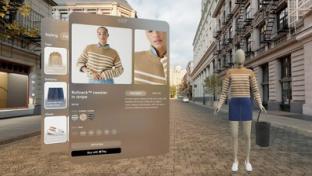Don’t get tricked this Halloween – these technologies can be treats
Innovative solutions often seem scary, but once they’re brought into the light of day their true value is revealed.
Every year at Halloween time, I like to publish a seasonally themed column about the figurative ghosts and goblins that haunt retail technology professionals. This year, I’m turning my attention to some next-gen solutions that many in the retail tech industry view as tricks on their enterprise; but can actually serve as treats for their customers and co-workers.
Let’s all take a deep breath, adjust the eye-holes in our plastic monster masks, and shine our flashlights on the tasty retail tech goodness offered by the metaverse, NFTs and TikTok.
Metaverse
In the world of retail technology, 2022 could have qualified as the year of the metaverse. But in 2023, rapid advancements in the field of artificial intelligence, especially generative AI, have pushed metaverse technology out of the limelight. Many retailers may understandably view the metaverse as yesterday’s tech buzzword.
But they’re wrong. Even though it no longer gets top billing among retail technologies, the metaverse is still a top leading-edge retail solution. For evidence, we need look no further than ongoing metaverse efforts at two industry giants: Amazon and Walmart.
In May 2023, Amazon introduced Amazon Anywhere, an offering which enables customers to shop and buy physical products from within virtual environments, such as video games, augmented reality (AR), and third-party mobile app. More recently, the e-tailer launched shoppable Virtual Campus Tour and Virtual Campus Store metaverse environments featuring merchandise from its Prime Video streaming series “Gen V.”
Meanwhile, Walmart, which initially debuted in the metaverse by launching two new metaverse experiences on Roblox in September 2022 and has been expanding ever since, says it is going to deepen its commercial activities in “virtual worlds.” During the next year, Walmart plans to test a variety of experiences in virtual worlds that connect virtual environments to brick-and-mortar stores and vice versa.
NFTs
NFTs, or non-fungible tokens, are unique digital assets stored on a blockchain ledger that certifies the owner. There is no way for an NFT to have more than one owner, and only the certified owner can sell it. NFTs first came to prominence in 2021, when they were seen as valuable commodities that could be invested in as unique pieces of digital artwork.
The market for collectible NFTs has cooled dramatically, and many retailers which primarily saw them as promotional items have also cooled on their interest in NFTs. But the underlying technology of NFTs can enable retailers to connect directly one-on-one with consumers In new ways.
In an interview with Chain Store Age, Justin Hochberg, CEO and founder ofVirtual Brand Group (VBG), discussed how retailers can leverage NFTs beyond using them as giveaways, tokens, or collectible items for auction.
“Instead of just gathering (a customer’s) credit card information, and maybe having an email address, (with NFTs) retailers actually have a way to communicate with them individually, send them information, give them goods, give them rewards, give them loyalty points,” said Hochberg.
TikTok
TikTok has been attracting large amounts of attention during the past few years, and not always the good kind. The Biden administration has been consistently continuing to express serious regulatory concerns, which began under the Trump administration, and the state of Montana went so far as to ban TikTok within its borders (a prohibition which may be difficult or impossible to enforce).
However, an estimated 150 million Americans use TikTok, and major retailers including Walmart and Sephora have partnered with the short video platform. Recently, TikTok further solidified its presence in the U.S. digital retail space by launching TikTok Shop, an e-commerce storefront that includes selling tools for retail partners.
Partnering with TikTok as a promotional and/or commerce channel may not be the right step for every retailer, but don’t let general fears about its viability prevent you from exploring its potential. Consumers aren’t scared, as evidenced by new ESW data showing 36% of all U.S. consumers, including 53% of 18-to-29-year-olds, will use TikTok as a holiday shopping resource this year.







